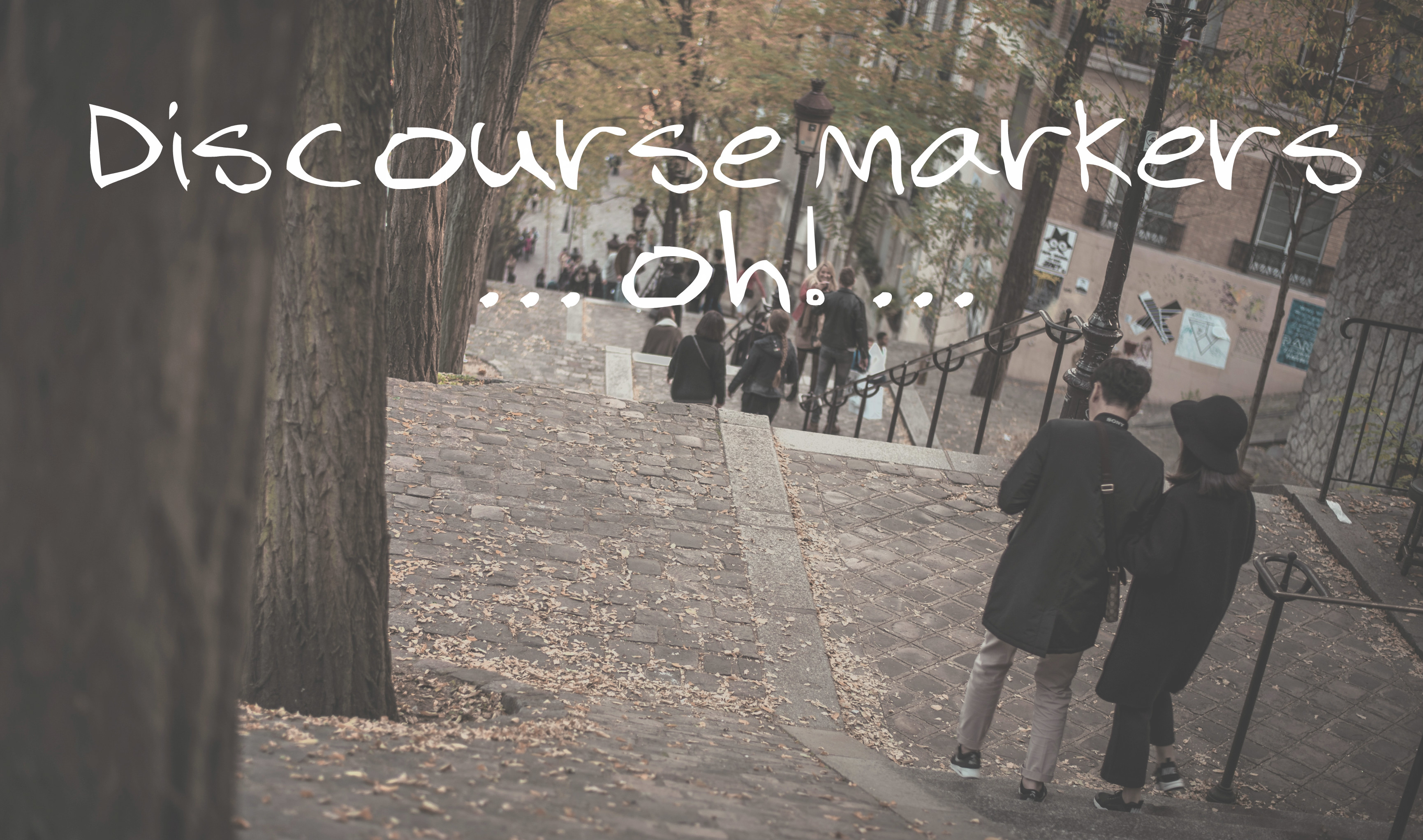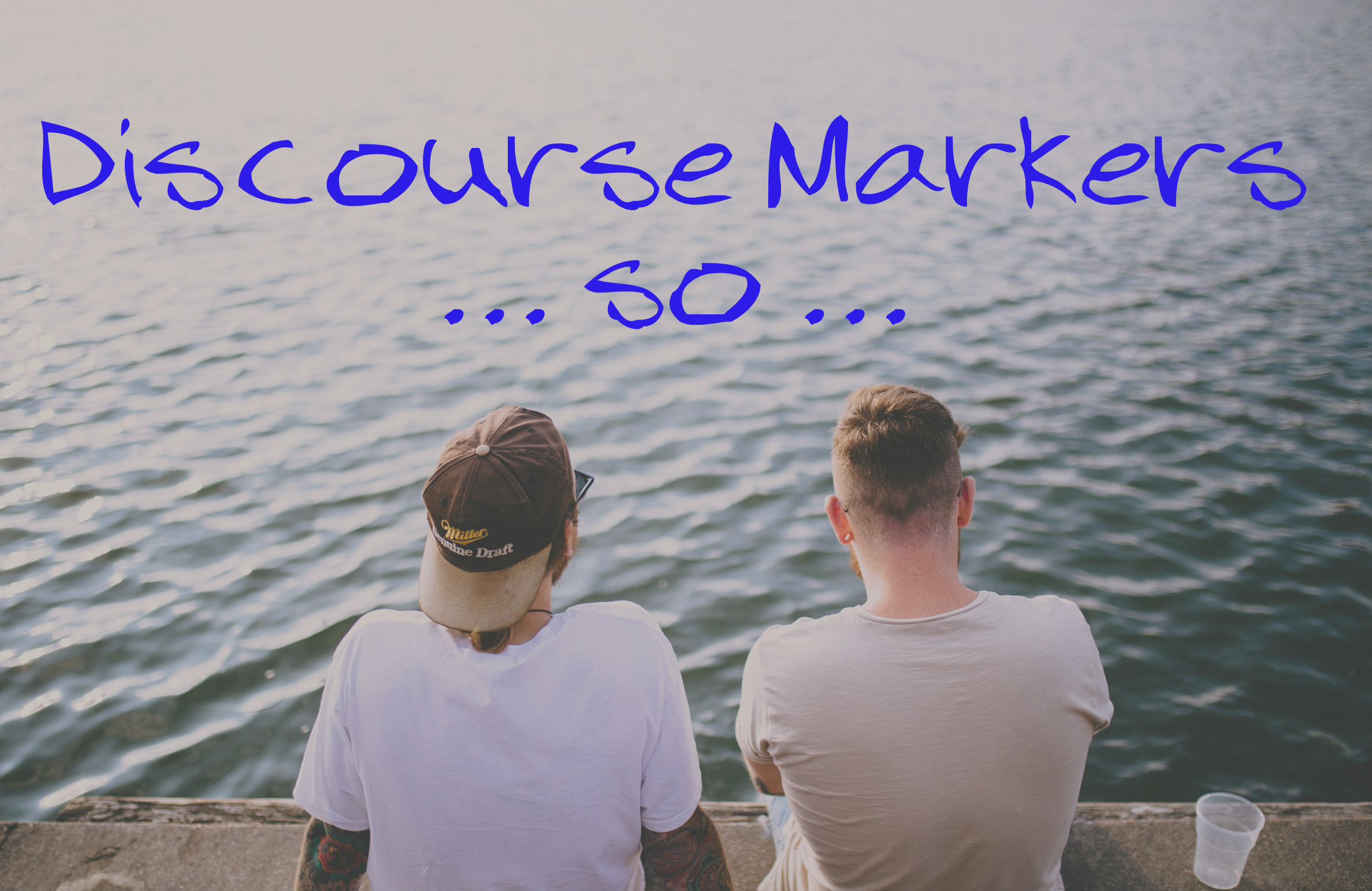Making your writing flow

Coherence and cohesion are two terms we use to describe good writing (and speaking). Coherence means that ideas are linked together in a logical order; while cohesion can be thought of as the unity that results when these links are deliberately made through certain techniques, such as repeating words or phrases.
Basically, coherent and cohesive writing flows. It’s not choppy. One idea just naturally progresses to another idea. Readers move through the text effortlessly. It’s all smooth sailing, from the first word to the last.
How do we achieve this magical feat?
Linguists often talk about something called the known-new contract. While this is a bit complicated, it boils down to helping out your reader by ordering your information so that known material is given before new material. Look at these two groups of sentences:
I.
Phrasal verbs are verb phrases formed from a verb and a particle. Discourse markers differ from phrasal verbs since they are formed from only one word. Transitive verbs have direct objects, while intransitive verbs don’t. Phrasal verbs can have direct objects, but they may also be intransitive. The particles in phrasal verbs may or may not have direct objects.
II.
Phrasal verbs are verb phrases formed from a verb and a particle. Particles may look like prepositions, but they actually aren’t the same. Unlike prepositions, particles don’t need to have an object. So, for example, in the phrasal verb, to hang out, out looks like a preposition, but it has no object. Therefore, it’s not a preposition. Particles may have objects, but unlike prepositions, they don’t have to have them.
Do you see how difficult the first group is to read? The subject of each sentence is different, and the sentences don’t flow. Each sentence provides you with new information that doesn’t relate to the preceding sentence.
On the other hand, in the second group, the ideas flow from sentence to sentence. It starts with the given information, a definition of phrasal verbs. But since the writer assumes the information about particles is new, she then moves on to define particles by comparing them to prepositions.
Obviously, determining what is “known” to your reader is important. In the writing above, I assumed that my reader would know the different parts of speech in English. If I were writing for beginners in English, I would start with more basic information. But whoever your audience is, the principle remains the same. Start with known information; then introduce new information. This helps make your writing coherent and cohesive … something your reader will definitely appreciate.
In my next post, I’ll talk about three simple ways to organize your written sentences following the known-new contract.
A final look at discourse markers

I’m going to consider several discourse markers in this final post. Remember, discourse markers are those often unnoticed words at the “margins” of our conversation. But as Anne Curzan, linguistics professor at the University of Michigan, points out, these little words are far from meaningless. Or, at least, most of the time. I’ll also discuss how we sometimes overuse them, and how to avoid that.
Now and OK, like so, are attention-getters and topic-shifters. We often use now and OK to start a new train of thought or draw attention to something important.
Lecturer: Now, let’s consider different ways we can use discourse markers in speech.
Teacher: OK, let’s turn to page 49 in the textbook.
Now also serves an important function by introducing warnings or a reversal of a previous position. For example:
Parent: Now, be sure not to talk to any strangers.
Speaker: Now, there’s a problem with that argument. Let’s see what this other author has to say.
Um, like well and now. is often used to introduce a new topic. On the TOEFL, you’ll often hear lecturers begin their remarks with um. And, like well, um is also used to begin what Curzan calls “a dispreferred response” … when we say something we’re not sure our listener will like. For example:
Speaker: Um, I’m not sure you’re correct about that.
I mean is often used to clarify or adjust a previous statement. For example:
Speaker: I usually don’t eat meat. I mean, I’ll have it on special occasions but not every day.
It can also be used to equalize our relationship with our listener … in a way, it lessens our authority.
Supervisor: I think your report needs some revision. I mean, it’s basically really good, but there are a few points you need to clarify.
Two discourse markers that are often overused are you know and like.
You know is a phrase that, by including you, invites our listener to participate with us. While I mean focuses on what you, the speaker are talking about, you know establishes your relationship with your listener. While this is generally a good thing in conversation, using you know too often can distract and even annoy your listener.
Like is another frequently (maybe too frequently) used discourse marker, especially by American young people. It can focus the listener’s attention on something we’re talking about, but it can also be a very repetitive filler word. Like is also being used more frequently to introduce reported speech (someone else’s words) in spoken English. For example:
Speaker: So my girlfriend was like you should have gotten me a birthday present. And I was like well I didn’t have the money. And she was like well at least you could’ve given me a card.
As a speaking rater of TOEFL, I’m also hearing actually being used more and more as a discourse marker. Speakers seem to be using it as a clarifier or an intensifier. It has the same general meaning of in fact (another discourse marker) and is sometimes used in combination with it.
Speaker: Actually, I think this is a really good idea.
Speaker: The man says he doesn’t agree with this plan, in fact, actually, he’s quite unhappy about it.
Again, actually is a discourse marker that can easily be overused. I have heard some speakers use it five or six times in the course of a minute, and that’s too much!
So when it comes to overusing discourse markers, how do we know how much is too much? I think the bottom line is … does your listener notice them? Discourse markers help shape our conversation and provide signals to our listeners, but they shouldn’t draw attention to themselves. When you use them properly, your listener won’t pay any attention to them.
As I said in a previous post, the best way to spot “discourse marker overuse” is to listen to a recording of your speech. Or you might ask someone who listens to you regularly. When I was a teenager, I used to overuse you know. Eventually, my mother started clearing her throat (ahhh-hem), every time I said you know. At the time, I was very annoyed with her, but it ended up being a very effective solution! 🙂
Discourse markers … oh! …

Oh is a very common and very versatile discourse marker, which is often used in combination with other words or phrases.
By itself, oh is usually used to indicate surprise or a sudden realization in a number of different situations.
Speaker (who has just spilled some water on someone else): Oh, I’m so sorry!
Speaker (who has just been told he is wearing a nice suit): Oh, thank you so much!
Speaker (who has just been reminded she needs to turn in a report for work): Oh, you’re right! Thanks for reminding me.
Speaker (who has just remembered a question he wants to ask someone): Oh, did you remember to put out the trash?
Speaker (who has just realized she made a mistake): Oh, I didn’t mean Broadway. That restaurant is on Main Street.
Speaker (who has just been told something upsetting): Oh, that’s awful! You must be so upset.
To change the meaning of oh or to intensify it, we can use lots of variations or changes of intonation.
As a question, with a rising intonation, we can ask, Oh? Oh really? Oh yeah?
Or, with a lowering intonation, we can reply, Oh, as a way of expressing disapproval or disappointment.
Speaker 1: The hotel doesn’t have a record of our reservation.
Speaker 2: Oh. (Or, said with sarcasm: Oh, great.)
To intensify the surprise and sometimes indicate concern about the speaker or situation, you can say:
Oh my!
Oh my goodness!
Oh my gosh!
Oh my God! (many Americans would consider this strong language and I would avoid using it unless you are sure it’s appropriate)
To indicate resignation or acceptance of something that’s not to your liking, you might use: Oh well.
Speaker 1: They just announced our flight is going to be delayed two hours.
Speaker 2: Oh well. I guess we’d better call the hotel and say we’re going to be late.
On the other hand, if something really bad happens, you might say: Oh no!
To agree with someone, you might say: Oh yeah! But with a different intonation, this same phrase could be used as a question, or even as a retort to a perceived insult.
Another common phrase is oh boy! Depending on your intonation, this can express pleasure, distress, or surprise.
Oh boy, I can’t wait to go!
Oh boy, we’re in trouble now!
Oh boy, I can’t believe she said that!
And, finally, when we remember something and want to catch someone’s attention, we often say: Oh, by the way …
Speaker: Oh, by the way, did you hear that Amal Clooney is expecting twins?
Discourse markers … well …

Well is a very common word in English that can be used as an adverb, adjective, verb, or noun. For example:
She swims well. (adverb modifying verb)
This app is well designed. (adverb modifying adjective)
Now that my fever is gone, I feel quite well. (adjective)
Tears welled in her eyes. (verb)
He gets his water from a well. (noun)
But well is also commonly used as a discourse marker. Remember, discourse markers are little, barely noticeable words or phrases used in spoken English. We don’t use them the same way in written English unless we are trying to transcribe someone’s speech patterns.
Like so, well can introduce a new topic. In fact, I find in my own speech, I’m more likely to use well than so. For example:
Lecturer: Well, today I’d like to talk about phrasal verbs.
It can also connect two thoughts together, without the causality implied by so. For example:
Speaker: I took a shower and, well, then I went to bed.
It can also be used with a question, or even as a one-word question:
Speaker: Well, how did your doctor visit go?
Speaker: Well? (often with a rising intonation, and sometimes a bit impatiently)
But Anne Curzan, a linguistics professor at the University of Michigan, points out another interesting use of well. It is also used to preface responses that we think our listener may not want to hear. Well might be used when we contradict what the speaker has just said, or when we’re basically saying “No.” Well seems to help soften the negative impact of our response. Often, when we use well this way, we stretch the word out a bit (weeelllll). It’s almost as if we’re giving the listener a moment to prepare emotionally for what we have to say. For example:
Speaker: Well, I’ve got kind of bad news. The doctor thinks I might have high blood pressure.
Speaker: Well, I’m not so sure you’re right about that. I kind of think that …
Speaker: Well, I understand what you mean but …
Speaker 1: Would you be able to host the next Alumni Club dinner?
Speaker 2: Well, I’d like to, but I don’t think we’re going to be in town that weekend.
Finally, we often use “oh well” together to signal understanding or resignation. In this case, the intonation of well often falls.
Speaker: Oh well, you can’t get an A on every test. You’ll do better next time.
Speaker: Oh well, I guess since it’s raining, we can just go to the movies. We can always go hiking next week.
Discourse markers … so …

Recently, I’ve been listening to a series of lectures given by Anne Curzan, a professor of linguistics at the University of Michigan. One of her lectures was on “discourse markers,” a special feature of spoken English. Discourse markers are those little words or phrases you may not even notice … so, oh, now, well, I mean … that play some very important roles in conversation. This topic was so interesting that I decided to write a series of blog posts about each of the words she discussed.
So, the first word we’ll look at is so.
“This topic was so interesting …” In this sentence, I’m using so as an adverb, to modify interesting. Beware, because I’ve heard speakers improperly use the adverb “so” instead of “too” — but they mean two different things. Too means “to an excess” (this soup is too hot); whereas so just means “really” (that movie was so good).
But how about so as a discourse marker, when it’s used in spoken English? What does it do there? Well, it can do different things.
First, it can signal an effect or logical consequence of what came before (and it does this in written English as well, as you can see in the second paragraph of this article).
Speaker: I was really focused on my work … I mean, I was tuning everything else out … and I really didn’t hear my phone … so my girlfriend is pretty mad cuz, you know, she thought it was on purpose, like I didn’t want to talk to her.
Also, so can introduce a summary or a rephrasing of something you just said.
Lecturer: So we’ve been discussing phrasal verbs … um … so those very common expressions in English that usually include a very common verb and those prepositions that really aren’t prepositions.
We can use so when we tell stories or narratives. Anne Curzan points out that they work almost like paragraph breaks in written English.
Speaker: So I was in English class and I was getting kind of sleepy and I guess I might have even drifted off a little bit. So my teacher suddenly called on me and everybody else started laughing at me because I didn’t know the answer. So, you know, I was upset and I ended up just walking out of the class. So now my teacher is mad and she says she’s going to mark me as absent.
Anne Curzan also notes that when someone interrupts our story, we often get it back on track with so or so anyway. For example:
Speaker: So anyway, I don’t know what to do because if I have another absence I’ll flunk this class.
We may also hear so used in response to questions; it can signal our willingness to answer a question and to make a connection with the person asking the question. For example, in an interview:
Interviewer: I’d be interested in knowing your opinions about the current political situation in China.
Expert: So that’s an interesting question. We probably need to look at several different aspects …
Finally so, asked in a questioning tone of voice (with a rising intonation) can be used to ask for a response from another person.
Speaker 1: I went to the doctor today.
Speaker 2: So? (with a rising intonation; in other words, “what happened?”)
